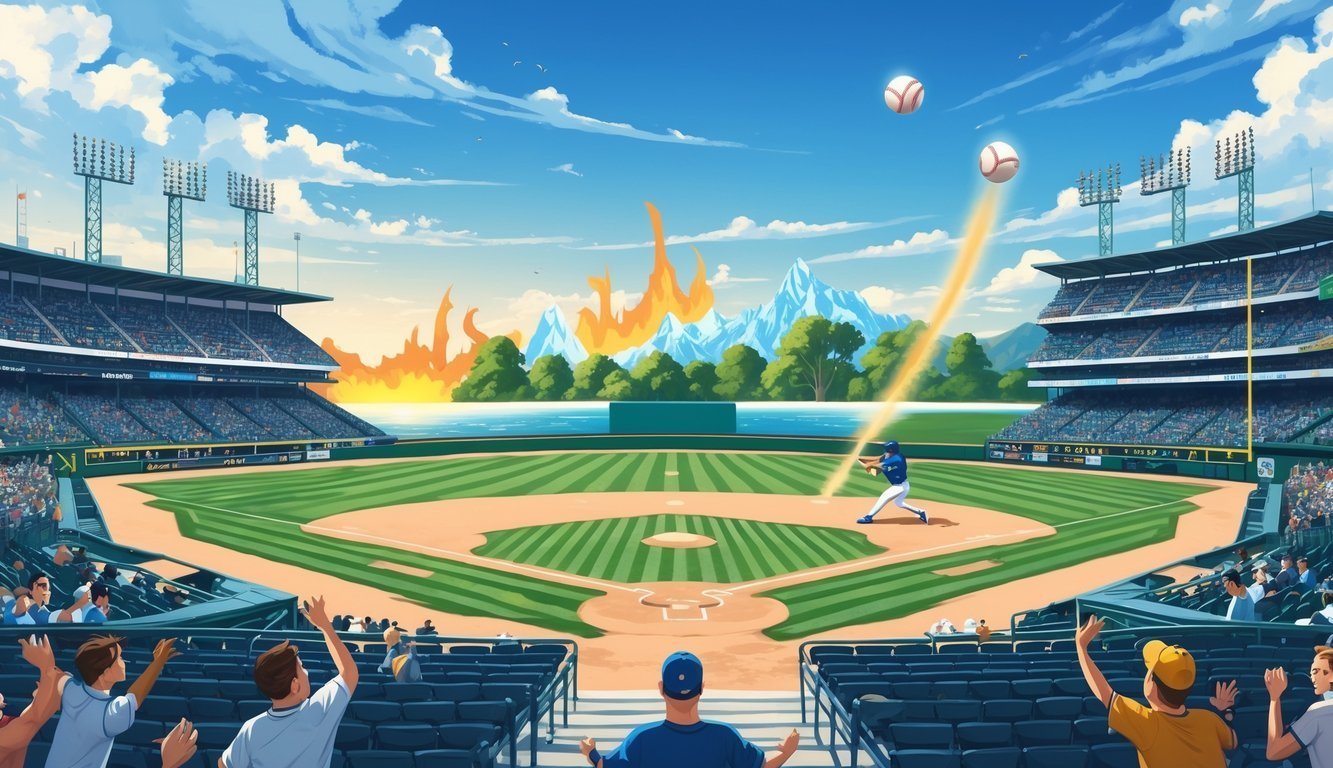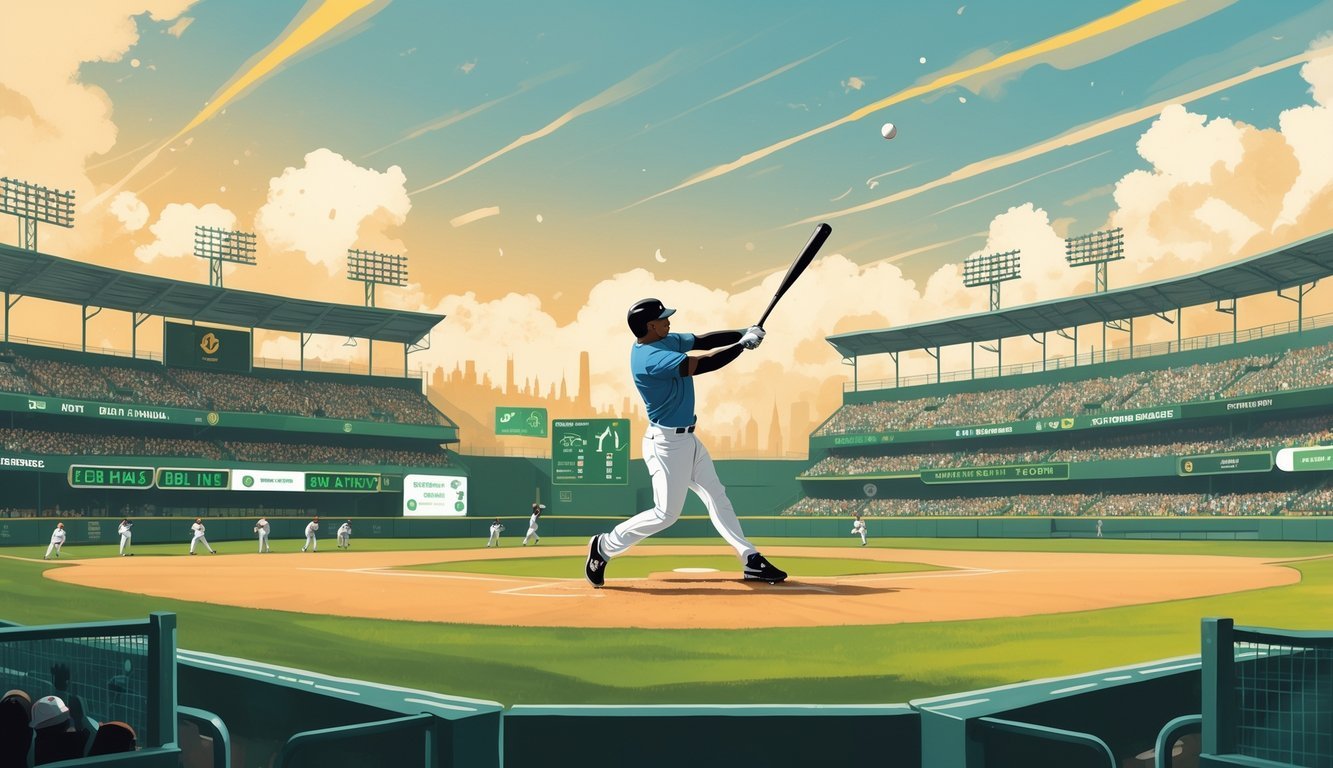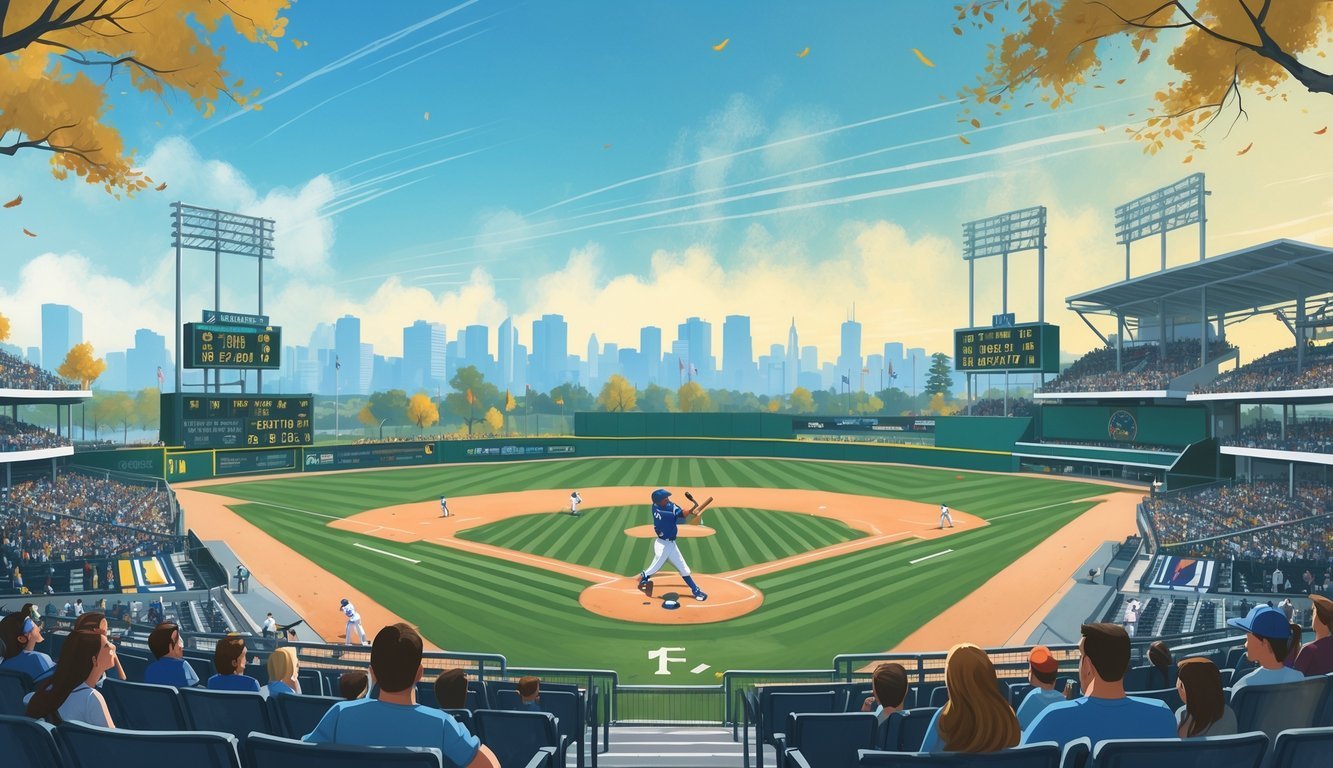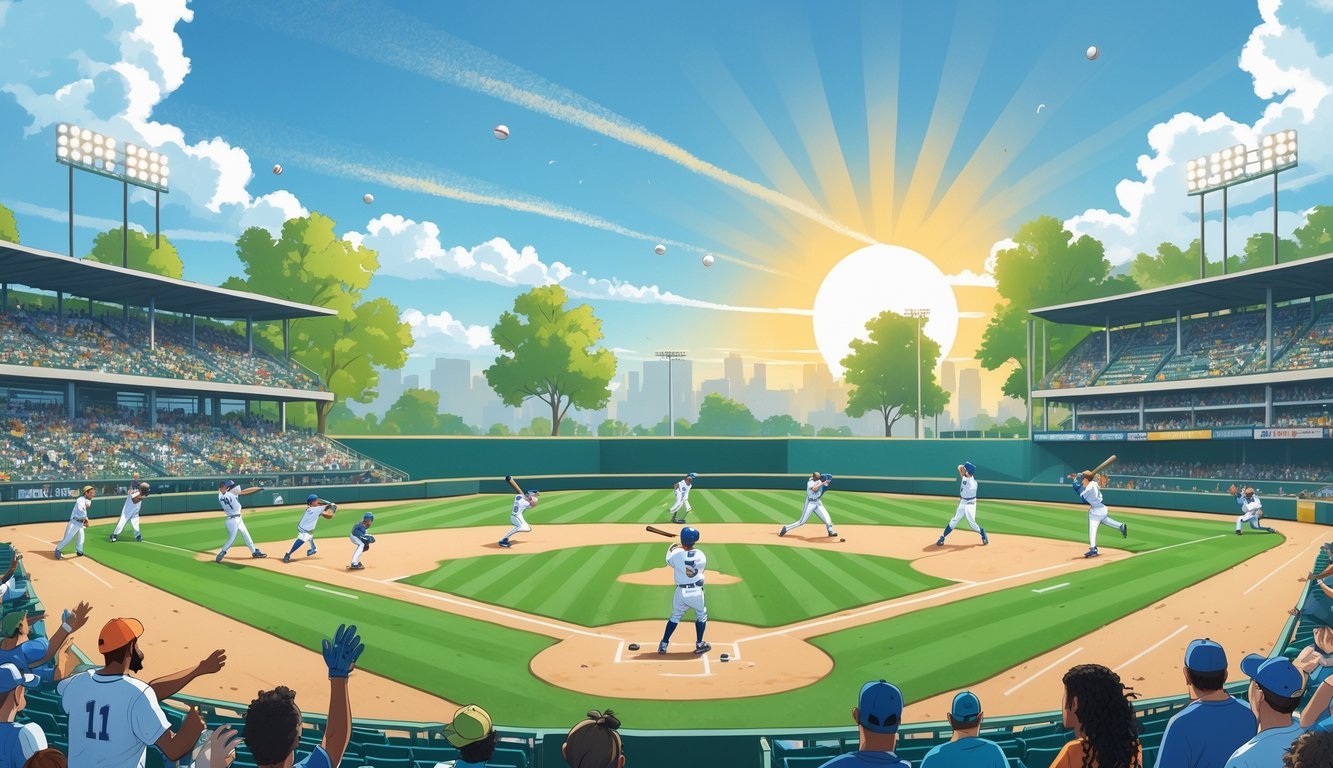PsychNewsDaily Publishers
100 Summit Drive
Burlington, MA, 01803
Telephone: (320) 349-2484
PsychNewsDaily Publishers
100 Summit Drive
Burlington, MA, 01803
Telephone: (320) 349-2484
Rising temperatures and lower air density enable baseballs to travel farther, resulting in over 500 additional home runs since 2010 in Major League Baseball.

Climate change is messing with more than just the weather—it’s sneaking into baseball too. If you’ve noticed more home runs lately, it’s not just luck or superhuman players on the rise.
Rising temperatures and thinner air from global warming let baseballs travel farther, so we’re seeing more home runs every season.
Since 2010, scientists estimate that players have hit over 500 extra home runs because of these warming trends. The climate outside the ballpark is quietly shifting how the game unfolds inside it.
This link between climate and baseball might sound surprising, but it really shows how the environment can sneak into even the smallest parts of daily life.
Thinking about this connection gives you a fresh way to watch the game. As temperatures keep climbing, home run numbers could rise too, changing your favorite sport in ways you might not expect.

You might have noticed more home runs in recent games. It’s not just that players are stronger or swinging harder.
Warmer air from climate change makes it easier for balls to fly farther. Air pressure and temperature together change how the ball moves after someone hits it.
As global temperatures climb, the air gets warmer around us. When the air warms up, it gets less dense.
Fewer air molecules push against the baseball when you hit it. Because the air pushes less, the ball can travel farther.
If you play baseball, you might see more of your hits turn into home runs on hotter days. Heat waves and rising average air temperatures from climate change are making a real difference.
Air density is a big deal in ballistics—basically, how baseballs move through the air after a hit. When greenhouse gases go up from carbon pollution, the air warms and thins out.
Lower air density means less drag on the baseball. The ball keeps its speed longer and covers more ground.
Sure, launch angle and speed matter, but with less air resistance, your odds of a home run get a boost. The ball just flies farther than usual.
Researchers found that global climate change led to about 500 extra home runs in Major League Baseball between 2010 and 2019. That’s about 58 more per year just because of warmer air.
Statcast data tracks how these warming-aided home runs happen by measuring launch angle and speed. Climate change only explains a small slice of total home runs (about 1%), but it’s a clear, measurable effect.
Shifts in air density and temperature in ballparks are making a difference—even if it’s not always obvious.

Where and when a Major League Baseball game happens can totally change how the ball flies. The stadium, the time, and the weather all play their part in the number of home runs you’ll see.
Outdoor stadiums like Wrigley Field and Coors Field feel the weather changes directly. Warm air makes the ball travel farther because it’s less dense.
That means more home runs on hot days. Indoor or domed stadiums, like Tropicana Field, keep things controlled.
They keep air temperature steady and cut down on weather effects. Studies show domed stadiums see about 45% fewer climate-related home run changes than outdoor parks.
Your experience will definitely shift depending on whether you’re watching under the open sky or inside a dome. Outdoor parks react more to heat, wind, and humidity.
Day games usually happen with the sun out and temperatures up. The ball can carry farther, especially during summer.
You’ll probably see more home runs in day games because of the warmer air. Night games are cooler, so the air is denser.
Denser air keeps balls from traveling as far. Fewer long home runs show up at night compared to day games.
When you watch a day game at an outdoor park, you really notice how heat affects the ball’s flight.
Coors Field in Denver stands out for its thin, dry air at high altitude. Lower air resistance helps balls fly farther here.
The stadium gets a lot of home runs, especially on warm days. Wrigley Field in Chicago is another outdoor park that feels the weather.
Wind off Lake Michigan can help or hurt the ball’s distance. Warm days mean more home runs here, too.
Tropicana Field is indoors. With a dome, temperature and weather stay steady.
This makes it less sensitive to climate changes than Coors or Wrigley. These ballparks show how location and stadium type really change how the game plays for hitters and pitchers.
Extreme weather events are popping up more often and affecting games in weird ways. Heat waves can push stadium temperatures way above normal, which boosts home run rates.
Heavy rain or storms sometimes delay or even cancel games. That can cut down the total number of home runs in a season.
Baseball operations teams have to adjust for these changing conditions. You might spot more schedule changes or different strategies because of extreme weather.
At Dartmouth College, researchers highlight how climate changes, like sudden heat spikes, are shaping America’s pastime. It really makes you think about how weather fits into the game you love.

You might be wondering how rising temperatures, air changes, and other climate factors are affecting baseball games. The details below focus on how these changes influence home runs and what that means for players and teams.
Absolutely. Warmer air lets the ball travel farther, so we’re seeing more home runs. Since 2010, over 500 home runs have been tied to rising temperatures.
Warmer temperatures lower air density. Less air resistance pushes against the ball, so it flies farther and faster.
Higher CO2 levels lower the density of the air. This helps the baseball travel longer distances after being hit, which can bump up home run numbers.
Air density affects how much drag slows down a baseball. Climate change makes the air warmer and less dense, cutting down on drag.
With less drag, the ball can cover more distance, so home runs go up.
Yes, definitely. Parks in warmer regions or those with rising temperatures might see more home runs.
Shifts in weather patterns can create conditions that help the ball travel farther.
Teams can tweak their strategies, focusing on how pitchers throw and where players stand on the field.
They might even look at switching up equipment or changing training routines. Warmer air and less resistance on the ball? Those factors could push teams to make adjustments, too. warmer air